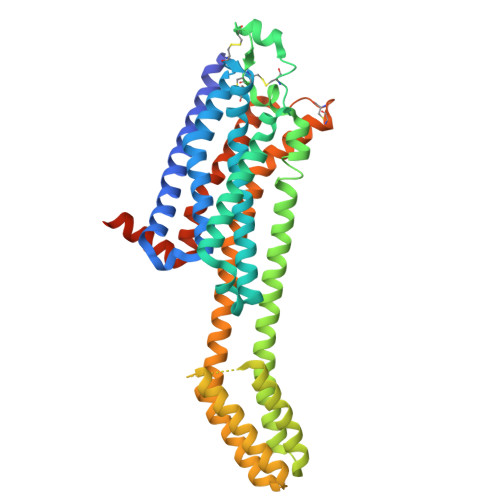Identification of nanomolar adenosine A 2A receptor ligands using reinforcement learning and structure-based drug design.
Thomas, M., Matricon, P.G., Gillespie, R.J., Napiorkowska, M., Neale, H., Mason, J.S., Brown, J., Harwood, K., Fieldhouse, C., Swain, N.A., Geng, T., O'Boyle, N.M., Deflorian, F., Bender, A., de Graaf, C.(2025) Nat Commun 16: 5485-5485
- PubMed: 40592852
- DOI: https://doi.org/10.1038/s41467-025-60629-0
- Primary Citation of Related Structures:
9H2X, 9H37 - PubMed Abstract:
Generative chemical language models (CLMs) have demonstrated success in learning language-based molecular representations for de novo drug design. Here, we integrate structure-based drug design (SBDD) principles with CLMs to go from protein structure to novel small-molecule ligands, without a priori knowledge of ligand chemistry. Using Augmented Hill-Climb, we successfully optimise multiple objectives within a practical timeframe, including protein-ligand complementarity. Resulting de novo molecules contain known or promising adenosine A 2A receptor ligand chemistry that is not available in commercial vendor libraries, accessing commercially novel areas of chemical space. Experimental validation demonstrates a binding hit rate of 88%, with 50% having confirmed functional activity, including three nanomolar ligands and two novel chemotypes. The two strongest binders are co-crystallised with the A 2A receptor, revealing their binding mechanisms that can be used to inform future iterations of structure-based de novo design, closing the AI SBDD loop.
- Centre for Molecular Informatics, Department of Chemistry, University of Cambridge, Cambridge, UK.
Organizational Affiliation:




















